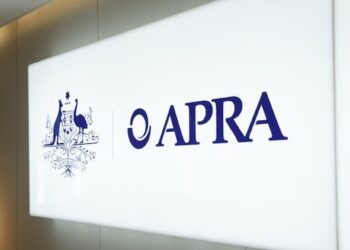A new report warns super funds must rethink retirement readiness as older Australians use super savings to pay off housing debt.
A new white paper has revealed that nearly half of home owning Australians aged 55–64 are now carrying housing debt into retirement, placing growing pressure on superannuation balances that were originally designed to fund post-work income.
The report, authored by retirement finance experts Harry Chemay and Sahil Kaura, found that many retirees are increasingly using lump sum withdrawals from their super accounts to extinguish mortgages.
The practice has left many “asset-rich but cash-poor”, with housing wealth now outweighing superannuation assets by nearly three to one.
With older Australians showing a strong preference to remain in their homes, the report warned that the traditional debt-free retirement model no longer reflects reality.
It urged superannuation funds to consider members’ total household balance sheets – including housing equity and debt – when assessing retirement readiness under the Retirement Income Covenant.
“Australia’s changing housing dynamics demand a retirement rethink,” said Chemay, principal of Credere Consulting Services.
“The dominant paradigm assumes households retire debt-free, but that’s increasingly unrealistic for many people. A better approach recognises the role of housing equity in bridging the gap between desired retirement lifestyles and available financial resources.”
The white paper, The growing debt burden of retiring Australians: Challenges, solutions, opportunities, supported by Homesafe Solutions, represents one of the most comprehensive post-COVID-19 analyses of later-life housing debt.
Drawing on ABS and Melbourne Institute HILDA data, the report has called for co-ordinated policy and industry responses to the growing retirement income strain.
It highlighted home equity release as a viable but underused solution, echoing findings from the Retirement Income Review and the OECD that such products, when well-designed, can significantly improve retirement outcomes.
According to the report, these products can boost retirees’ discretionary income by up to 70 per cent without forcing the sale of their homes.
Homesafe Solutions CEO Dianne Shepherd said: “We believe every retiree deserves the dignity of choice and financial confidence.
“This report reinforces the need for innovative, transparent solutions that respect people’s desire to age in place while unlocking the value of their homes in a safe and responsible way.”
Unlike reverse mortgages, the Homesafe model operates as a property transaction rather than a loan, allowing home owners to retain full ownership and a guaranteed right of occupancy for life.
While Australia’s home equity release sector remains relatively small – with $4 billion in outstanding reverse mortgage balances as of March 2025 – demand is steadily rising as retirees seek to manage rising living costs and lingering household debt.
Barriers persist, however, including consumer hesitation, limited product understanding, and concerns about age pension implications.
Chemay urged policymakers, super funds, and advisers to take note of the findings.
“A total balance sheet approach to member retirement readiness might help super fund trustees to better deliver on their obligations in respect of the Retirement Income Covenant. Super funds should adapt calculators and member strategies to include housing equity and debt,” he said.




